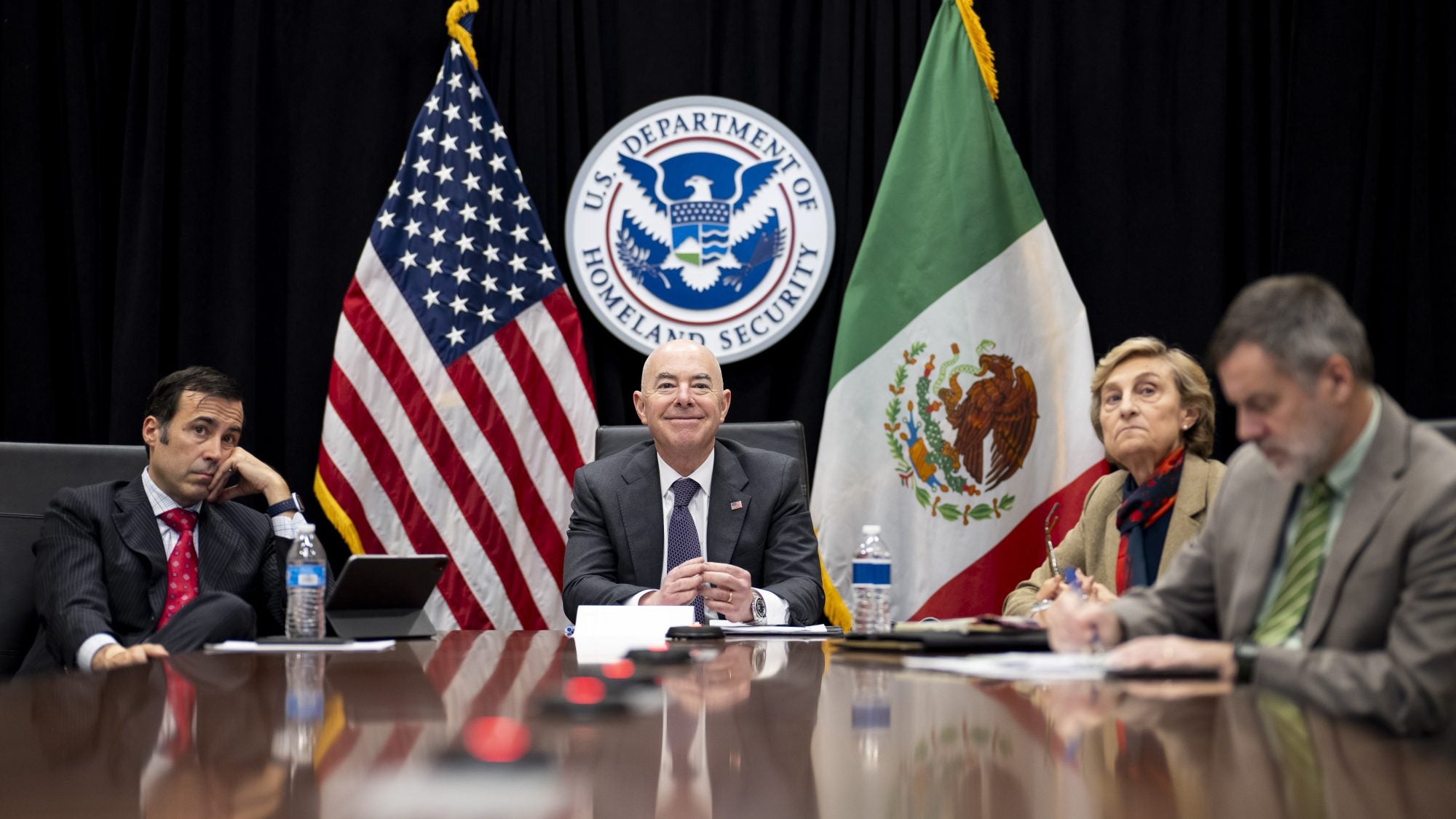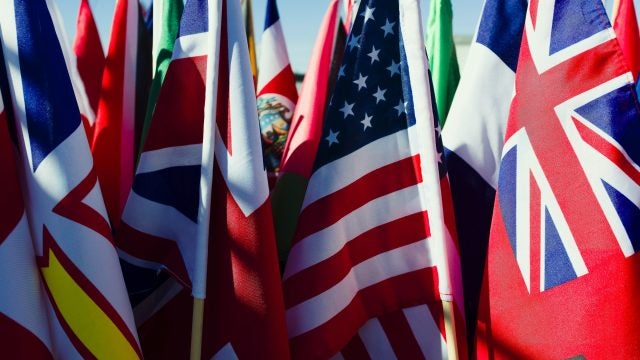
Title: Soft Power with Teeth: Looking Beyond Military Action in Solving the Fentanyl Crisis
The fight against fentanyl trafficking requires a complex suite of policies and strategies. A direct military response to an admittedly serious challenge to U.S. national security is not the best solution to this crisis. Given the specific characteristics of the drug, such as its high potency and versatile composition, policies need to incorporate political, diplomatic, law enforcement, and economic elements to address the Fentanyl Crisis.
About half of Americans polled in September 2023 were in favor of sending U.S. armed forces into Mexico to fight drug cartels. Unfortunately, fentanyl trafficking and the unacceptably high number of American deaths due to overdoses cannot be addressed through mere military action. The more effective method to fight against fentanyl is to augment our current policy of multilateral diplomatic engagement and cooperation with Mexico using our political capital, law enforcement resources, and fundamental economic power.
What the United States Stands to Lose
Military action undermines U.S. interests, both in the region and beyond. Any direct U.S. involvement against cartel groups inside Mexico would be taken by our southern neighbor and new top trading partner as a declaration of war, no matter what possible nuance the U.S. might attempt to convey. A recent decision by Mexico’s president to allow a dozen U.S. Special Forces trainers to work with their Mexican counterparts to fight fentanyl is carefully bound to protect Mexican sovereignty. Mexicans learn from an early age that the United States waged several wars of aggression in the 19th and 20th centuries, and the Mexican military reveres its “boy hero” cadets who died fighting American invaders. Consequently, worldwide opinion would immediately coalesce in favor of Mexico. Every other coalition the United States leads, and U.S. interests internationally, would undoubtedly be put in jeopardy.
Changing the bilateral relationship to one of militaristic animosity would further obliterate our significant cultural and economic ties with Mexico. There are about 1.6 million American expatriates or dual nationals living in Mexico; Mexican citizens constitute over 20 percent of all visitors to the United States, and about 40 million Americans vacation or visit Mexico annually. Bilateral trade in goods and services is estimated at over $850 billion per year. It would be hard to find an American who would be economically unaffected if that connection were to be disrupted.
Practical Complexities
Practical complexities also overwhelm the simplified concept of a military action. This starts with the problem of targeting: who is a “member” of a cartel, and what constitutes the standard of proof? Are leaders exempt while foot soldiers engaged in drug processing can be killed in their labs? And what about unaffiliated drug chemists and brokers? Are U.S. forces going to be on the ground, and if so, how will they get there and return home?
Even if the costs of a military approach were deemed acceptable, dreams of ending the drug trade this way reflect a distorted diagnosis of the fentanyl problem, particularly the view that cartels manage the fentanyl supply market in a vertical and organized fashion with rigorous control. In this hypothetical scenario, cartels buy chemicals or finished fentanyl from China, create the drug or press the pills, and move the shipment across the border where it is sold.
In reality, however, the structure is more horizontal, with many producers; the inconsistent quality of drugs found in the United States denotes various manufacturing processes and networks. Some players may not even be aware of their role in this trade network. Given fentanyl’s incredible potency and small physical size, Mexican businesses that lose small amounts of precursor chemicals may be trafficked inadvertently. Cartels do enter the fentanyl trade at key points, for example, facilitating cross-border infiltration. Still, there is no comparison between their role in this process and the more active one they play in managing territorial control over plant-based drug cultivation and processing.
The China Link
Given the small quantities of ingredients and the difficulty of regulating internet-based trade, the multi-billion-dollar global chemical industry is particularly difficult to control. In a major study by the think tank InSight Crime in May 2023 on the trade in opioid precursors, researchers inquiring about buying illegal chemicals had considerable success with China-based suppliers clustered in Hebei and Hubei provinces. Salespeople online were quick to assure the “buyers” that the products would be discreetly wrapped. This easy access to the black market and borderline legal substances has the potential to embarrass China on the world stage, thereby making its chemical industry vulnerable to international sanctions.
It is, therefore, no coincidence that President Biden and President Xi came to one of their rare agreements on this issue during their November summit, at least in principle. The day after the Biden-Xi meeting, China’s National Narcotics Control Commission issued a directive to businesses ‘reminding’ them of the importance of companies engaged in chemical sales and logistics being aware of existing laws preventing the shipment of narcotics and psychotropic drugs abroad. Measures like these are necessary but not sufficient, especially since fentanyl precursors can easily be sourced from outside China.
So, What Can Be Done Instead?
Combating the flow of fentanyl into the United States is indeed an issue that rises to the level of national security, with the potent drug emerging as the leading cause of death among Americans aged 18-45. The U.S. government should leverage key elements of the Biden policy toolkit, including economic sanctions, tough bilateral diplomacy (in private), and active law enforcement efforts to dismantle drug trafficking networks. But getting better results also requires a change of narrative and a broader approach that reflects the political, diplomatic, economic, and law enforcement elements of the issue.
Politically, the U.S. should carefully observe Mexico’s 2024 election season. It is important to convey that drug trafficking will be a make-or-break element of the relationship of the new president with the United States. The message can be conveyed while keeping rhetoric and threats out of the public discourse since goading the Mexican candidate into making a public response would render future cooperation significantly more difficult.
The diplomatic path forward is to deeply emphasize and utilize multilateral efforts, drawing attention away from the thorny history (and present) the U.S. shares bilaterally with both Mexico and China. China’s re-entry into PEN Online, a reporting system for international chemical trade spearheaded by the International Narcotics Control Board (INCB), is a good development in this regard. The U.S. should increase funding to the UN’s Office of Drugs and Crime (UNODC) and to the INCB for its capabilities aimed at precursor control, including analysis of licit requirements for chemical trade and coordinated law enforcement actions. Concerning the worldwide Commission on Narcotic Drugs, held annually under UNODC auspices, the U.S. should propose a resolution to make it standard practice to apply prohibitions to analogs of currently scheduled substances based on the clear gaps in control of rapid mutations of chemical formulae.
Law enforcement must fill the role of compliance that the military should not and, arguably, cannot. Some efforts can include engaging in more individual car searches at the border, even if that slows down daily traffic between the countries, bringing joint indictments against Mexico’s most powerful criminals and their U.S. distribution partners, and denying visas to Mexican leaders who prevent U.S.-Mexican law enforcement cooperation. Since drug traffickers rarely deal with only one illegal substance, it is urgent to address concurrent issues of wildlife trafficking, human trafficking, and other crimes.
Finally, the U.S. should also do all it can to “trilateralize” its efforts and wield its powerful economic weapon of international trade. The goal should be a protected continent, uniting the U.S., Mexico, and Canada by linking drug enforcement to the existing multi-billion-dollar US-Mexico-Canada free trade agreement (USMCA). The USMCA could be an enforcement mechanism for the private sector by imposing sanctions on illegal chemical trades if the industry control regime is insufficient. This governance is underway through the North American Drug Dialogue, but the three countries should go further, harmonizing their systems of voluntary notification of chemical imports with no known dual use through the International Special Surveillance list and ensuring that all three countries have the same law enforcement cooperation agreements. Chemical import regulations could also require the importer to attest to the need for chemicals with no known dual-use or the elevated demand when compared to previous years’ importation to avoid denial of their import licenses.
Conclusion
The national interest of the United States has been rightly triggered by the death toll from synthetic opioids, drugs that are becoming even more dangerous. The extremity of the crisis should open policy options heretofore seen as radical – such as using a trade agreement to stem precursor chemicals – but not those that are self-defeating, such as military action against the will of a neighboring state. A highly complex problem needs agile and networked solutions, found through a combination of diplomatic, political, law enforcement, and economic tools of international affairs, and cannot be fixed through the use of a blunt instrument.
…
Annie Pforzheimer retired from the Foreign Service with the rank of Minister Counselor after a thirty-year career, during which she directed the $1 billion Merida Initiative at the US Embassy in Mexico and served as the Deputy Chief of Mission in Kabul, Afghanistan. She currently is an adjunct professor of international relations at the City University of New York and Pace University and a Senior Non-resident Associate at the Center for Strategic and International Studies.
Image Credit: Wikimedia Commons
Recommended Articles

On May 20, 2025, the World Health Assembly unanimously adopted the World Health Organization (WHO) Pandemic Agreement, an international treaty designed to strengthen pandemic prevention, preparedness, and…

As the Trump administration proposes a sweeping overhaul of the US foreign assistance architecture by dismantling USAID, the Millennium Challenge Corporation (MCC), and restructuring the State Department, there is an…

The Trump administration’s abandonment of allies and embrace of Putin’s Russia has raised pressing questions about whether Estonia, Latvia, and Lithuania can continue to rely on NATO for…